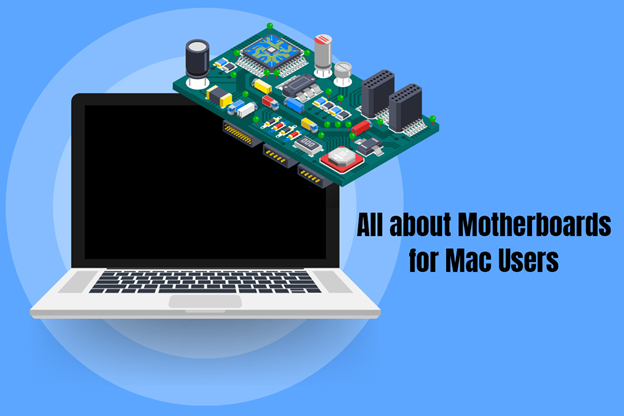The motherboard is the most essential part of any computer. It is the circuit board handling interactions between the different components ensuring your device works smoothly. On a Mac, the motherboard is called the logic board.
The logic board is the most expensive component of your Mac, and replacing it can burn a hole in your pocket. It houses the graphics chip, CPU, and in more modern models, the SSD and RAM. Since the motherboard is essentially the computer itself, you must take all the necessary steps to prevent damage.
What are the Reasons for Logic Board/Motherboard Failure?
Like any other component or device, the logic board is susceptible to wear and tear. For example, if you have used your Mac for several years, the logic board may get damaged or faulty.
However, other factors can damage the logic board.
- Overheating – If your Mac overheats, it can damage the logic board. An overheated Mac will also struggle to perform and complete regular tasks. You can prevent this issue by tracking your Mac’s temperature sensors. When it comes to Mac CPU temperature monitor, you can use tools like iStat menus. The tool helps analyze how each sensor performs in real-time to ensure your Mac is always operating between 10-35 degrees Celsius.
- Dust and dirt – Mac vents must always be cleaned so no dust and dirt are blocking the vents. Blocked vents cause overheating and may make the fans spin out of control. Also, it would be best if you did not work on your bed or in such positions that might be blocking the vents.
An electrical surge, liquid spills, and physical impacts are some other factors causing damage to the logic board. But do you know the signs indicating you have a damaged or faulty logic board? Read on to know.
Signs You have a Faulty Logic Board
- The Battery is not Charging
If Mac’s battery isn’t charging even when connected to an electric source, it is a sign the logic board might be damaged. Regardless of whether your Mac uses a USB-C or dedicated charging port, the power input is connected to the motherboard.
Therefore, a faulty logic board will impact the charging ports.
To check why your Mac isn’t charging, you can check the power source and battery health and reduce the tasks running on your device. Battery health can be checked by going to System Settings > Battery > Battery Health > clicking the Info icon. If they all check out and look fine, the problem is with the logic board. You may want to contact the Apple service center.
- System Crashes
All the components that ensure your Mac functions properly are controlled by the logic board. Therefore, if your Mac starts to fail and crash, it is an obvious sign that the logic board is compromised.
You may experience unexpected crashes after your Mac has booted up without a fuss. Your device might occasionally be freezing or shutting down.
You can shut down or restart your frozen Mac to continue working, but that’s a temporary fix.
You are recommended to find the root cause of the problem so you don’t have to replace the logic board and spend a hefty amount.
- Mac isn’t turning on
A defective logic board means your Mac may not boot up at all.
However, before jumping to conclusions, check if your Mac’s battery is fully charged or the battery needs replacement.
- The Audio is not Working
If your Mac suddenly stops producing music, it may indicate a faulty logic board. When the issue is related to the motherboard, you will not hear system sounds from your device.
The external audio devices like headphones and speakers may not work too. Your system may not even recognize the devices when you plug them in.
You can check whether the port is faulty or has Bluetooth issues. But if that’s not the cause, you likely have a faulty motherboard.
- Failed System Diagnostics Test
You can use system diagnostics to determine whether your logic board is damaged. However, when you use hardware diagnostics to test for a faulty logic board, you must perform a series of tests on different components of your Mac, like the CPU, RAM, and GPU.
These hardware tests can be quickly run using the in-built Apple Diagnostics tool. Or you can use a third-party diagnostic tool of your choice.
What to do if the Logic Board is Damaged?
If the logic board is damaged despite your best efforts to avoid such a situation, your only option is to contact the nearest Apple service center.
Please note that if you have been using your Mac for years, the best alternative to replacing the logic board is purchasing a new Mac because logic replacement is expensive.
The Bottom Line
Mac’s logic board is the most important component that ensures the smooth functioning of the entire system. Therefore, take steps to avoid accidents and mistakes that may damage the logic board.






![SIMS 4 Download Free For PC Full Version 2019 [UPDATED] SIMS 4 Download](https://www.geniustechie.com/wp-content/uploads/2019/03/SIMS-4-Download-100x70.jpg)


